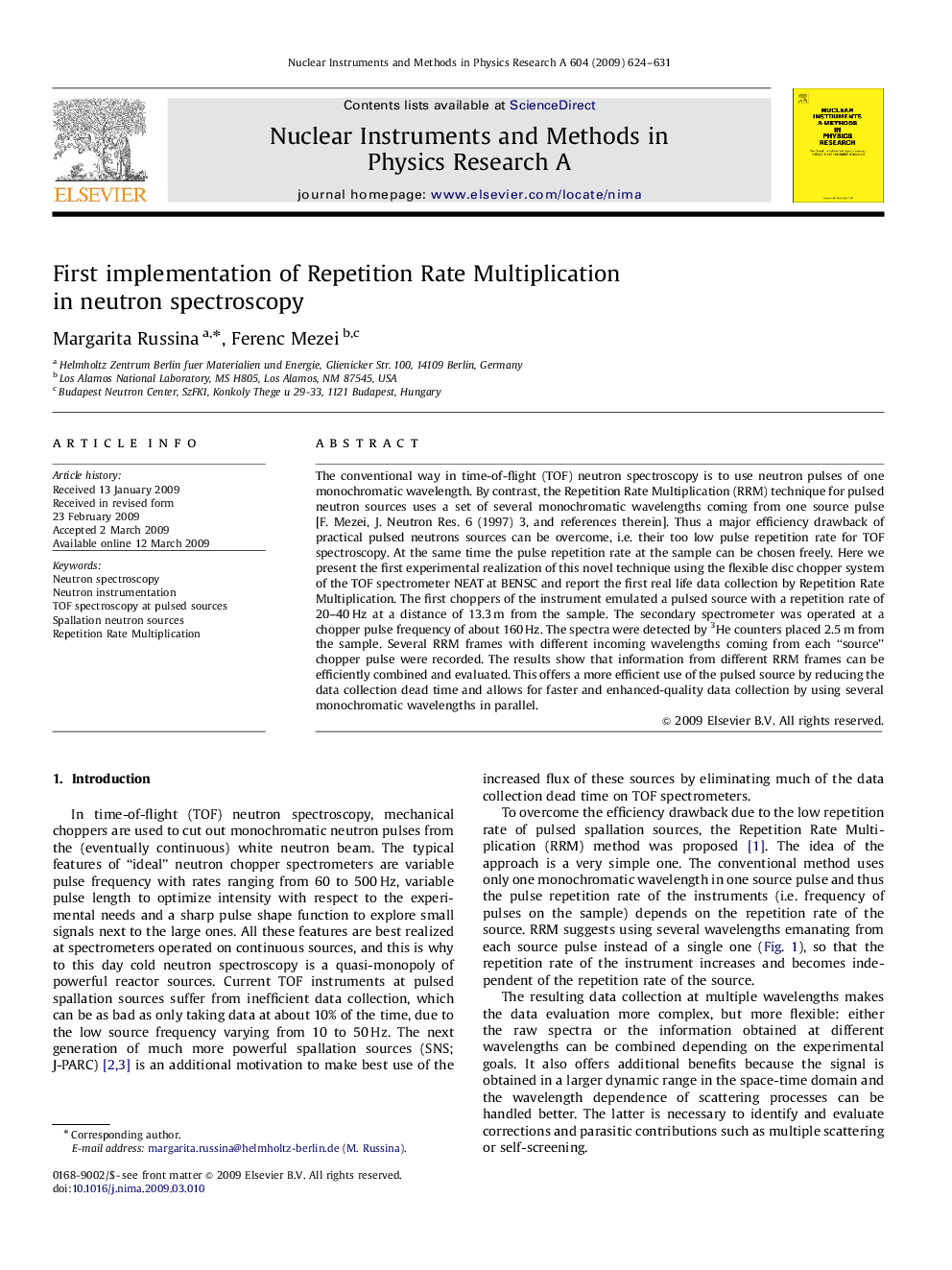| Article ID | Journal | Published Year | Pages | File Type |
|---|---|---|---|---|
| 1828341 | Nuclear Instruments and Methods in Physics Research Section A: Accelerators, Spectrometers, Detectors and Associated Equipment | 2009 | 8 Pages |
The conventional way in time-of-flight (TOF) neutron spectroscopy is to use neutron pulses of one monochromatic wavelength. By contrast, the Repetition Rate Multiplication (RRM) technique for pulsed neutron sources uses a set of several monochromatic wavelengths coming from one source pulse [F. Mezei, J. Neutron Res. 6 (1997) 3, and references therein]. Thus a major efficiency drawback of practical pulsed neutrons sources can be overcome, i.e. their too low pulse repetition rate for TOF spectroscopy. At the same time the pulse repetition rate at the sample can be chosen freely. Here we present the first experimental realization of this novel technique using the flexible disc chopper system of the TOF spectrometer NEAT at BENSC and report the first real life data collection by Repetition Rate Multiplication. The first choppers of the instrument emulated a pulsed source with a repetition rate of 20–40 Hz at a distance of 13.3 m from the sample. The secondary spectrometer was operated at a chopper pulse frequency of about 160 Hz. The spectra were detected by 3He counters placed 2.5 m from the sample. Several RRM frames with different incoming wavelengths coming from each “source” chopper pulse were recorded. The results show that information from different RRM frames can be efficiently combined and evaluated. This offers a more efficient use of the pulsed source by reducing the data collection dead time and allows for faster and enhanced-quality data collection by using several monochromatic wavelengths in parallel.
